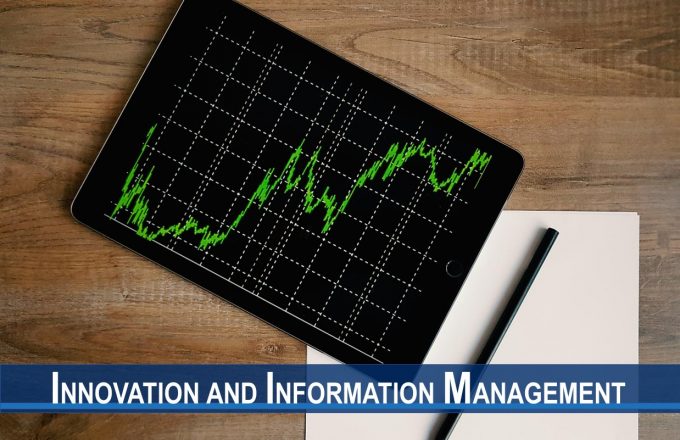儘管人們對與促銷相關的消費主義越趨關注,這項研究引證價格促銷對消費者慈善捐款行為產生的正面影響。具體而言,作者指出價格促銷能夠提高消費者對資源的感知,從而促進消費者的捐款行為。一系列共七項研究,結合實地和實驗數據,均支持是項研究的立論及對資源感知的潛在機制。此外,研究發現出現下列情況時,均會削弱價格促銷對消費者捐款行為的正面影響:當消費者聚焦開銷而非因價格促銷而節省的金額;當消費者認為他們的開支超出預算;以及當消費者未能即時節省金錢。最後,作者發現在價格促銷後馬上進行募捐,對比價格促銷結束後一段時間才進行募捐,此正面影響效果更強。是項研究引證在價格促銷下消費者作出新的行為模式及披露其潛在機制,指出價格促銷可為社會帶來正面的影響,為建設一個更美好的世界作出貢獻。
May 2021
Journal of Marketing
We investigate the effect of pre-IPO investments by public market institutional investors (institutions) on the exit of venture capitalists (VCs). Results indicate that institutions’ pre-IPO investments reduce IPO underpricing by mitigating VCs’ reliance on all-star analysts to boost market liquidity. We conclude that institutions facilitate VC exits in the secondary market. Supporting this view, our analysis reveals that the presence of institutions allows VCs to exit with a reduced price impact in the secondary market. Consistent with the ease of exit, VCs offer fewer shares at the IPO and are more likely to invest in institutionally backed startups.
May 2021
The Review of Financial Studies
In finance, economics and many other fields, observations in a matrix form are often generated over time. For example, a set of key economic indicators are regularly reported in different countries every quarter. The observations at each quarter neatly form a matrix and are observed over consecutive quarters. Dynamic transport networks with observations generated on the edges can be formed as a matrix observed over time. Although it is natural to turn the matrix observations into long vectors, then use the standard vector time series 2 models for analysis, it is often the case that the columns and rows of the matrix represent different types of structures that are closely interplayed. In this paper we follow the autoregression for modeling time series and propose a novel matrix autoregressive model in a bilinear form that maintains and utilizes the matrix structure to achieve a substantial dimensional reduction, as well as more interpretability. Probabilistic properties of the models are investigated. Estimation procedures with their theoretical properties are presented and demonstrated with simulated and real examples.
May 2021
Journal of Econometrics
We explore a large sample of analysts' estimates of the cost of equity capital (CoE) to evaluate their usefulness as expected return proxies (ERP). We find that the CoE estimates are significantly related to a firm's beta, size, book-to-market ratio, leverage, and idiosyncratic volatility but not other risk proxies. Even after controlling for the popular return predictors, the CoE estimates incrementally predict future stock returns. This predictive ability is better explained as the CoE estimates containing ERP information rather than reflecting stock mispricing. When evaluated against traditional ERPs, including the implied costs of capital, the CoE estimates are found to be the least noisy. Finally, we document CoE responses around earnings announcements, demonstrating their usefulness to study discount-rate reactions of market participants. We conclude that analysts' CoE estimates are meaningful ERPs that can be fruitfully employed in a variety of asset pricing contexts.
Apr 2021
Journal of Accounting and Economics
Product price risk is a potentially important factor for firms’ liquidity management. A natural place to evaluate the impact of this risk on liquidity management is the electricity industry, because producing firms face substantial price volatility in wholesale markets. Empirically, higher volatility of electricity prices leads to an increase in cash holdings, and this effect is robust to instrumenting for price risk using weather volatility. Cash increases more with price risk in firms using inflexible production technologies and those that cannot easily hedge electricity prices, indicating that operating flexibility and hedging are substitutes for liquidity management.
April 2021
Management Science
We use staggered share repurchases legalization from 1985 to 2010 across the world to examine its impact on corporate behaviors. We find that share-repurchasing firms do not cut dividends as a substitution. The cash for repurchasing shares comes more from internal cash than external debt issuance, leading to reductions in capital expenditures and R&D expenses. While this strategy boosts stock prices, it results in lower long-run Tobin's Q, profitability, growth, and innovation, accompanied by lower insider ownership. Tax benefits and paying out temporary earnings are two primary reasons that firms repurchase.
April 2021
Journal of Financial Economics
What capital allocation role can China’s stock market play? Counter to perception, stock prices in China have become as informative about future profits as they are in the US. This rise in stock price informativeness has coincided with an increase in investment efficiency among privately owned firms, suggesting the market is aggregating information and providing useful signals to managers. However, price informativeness and investment efficiency for state-owned enterprises fell below that of privately owned firms after the postcrisis stimulus, perhaps reflecting unpredictable subsidies and state-directed investment policy. Finally, evidence from realized returns suggests Chinese firms face a higher cost of equity capital than US firms.
March 2021
Journal of Financial Economics
We empirically examine the impact of industry exchange-traded funds (IETFs) on informed trading and market efficiency. We find that IETF short interest spikes simultaneously with hedge fund holdings on the member stock before positive earnings surprises, reflecting long-the-stock/short-the-ETF activity. This pattern is stronger among stocks with high industry risk exposure. A difference-in-difference analysis on the ETF inception event shows that IETFs reduce post-earnings-announcement drift more among stocks with high industry risk exposure, suggesting that IETFs improve market efficiency. We also find that the short interest ratio of IETFs positively predicts IETF returns, consistent with the hedging role of IETFs.
March 2021
The Review of Financial Studies
This article addresses the challenges in classifying textual data obtained from open online platforms, which are vulnerable to distortion. Most existing classification methods minimize the overall classification error and may yield an undesirably large Type I error (relevant textual messages are classified as irrelevant), particularly when available data exhibit an asymmetry between relevant and irrelevant information. Data distortion exacerbates this situation and often leads to fallacious prediction. To deal with inestimable data distortion, we propose the use of the Neyman–Pearson (NP) classification paradigm, which minimizes Type II error under a user-specified Type I error constraint. Theoretically, we show that the NP oracle is unaffected by data distortion when the class conditional distributions remain the same. Empirically, we study a case of classifying posts about worker strikes obtained from a leading Chinese microblogging platform, which are frequently prone to extensive, unpredictable and inestimable censorship. We demonstrate that, even though the training and test data are susceptible to different distortion and therefore potentially follow different distributions, our proposed NP methods control the Type I error on test data at the targeted level. The methods and implementation pipeline proposed in our case study are applicable to many other problems involving data distortion. Supplementary materials for this article, including a standardized description of the materials available for reproducing the work, are available as an online supplement.
March 2021
Journal of the American Statistical Association

























